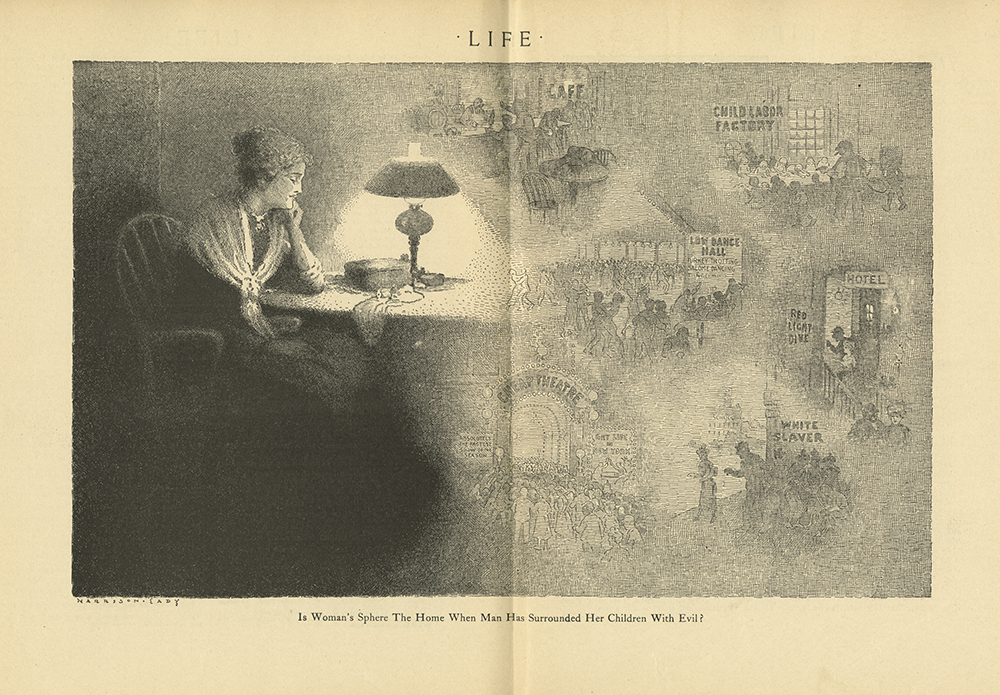Home / Modernizing America, 1889-1920 / Modern Womanhood / Expanding Women’s Roles and Fighting Public Evils
Resource
Expanding Women’s Roles and Fighting Public Evils
An illustration that raises questions about the role of women in social reform and outlines the social evils many middle-class citizens feared.
- About
-
Curriculum
- Introduction
-
Units
- 1492–1734Early Encounters
- 1692-1783Settler Colonialism and the Revolution
- 1783-1828Building a New Nation
- 1828-1869Expansions and Inequalities
- 1832-1877A Nation Divided
- 1866-1898Industry and Empire
- 1889-1920Modernizing America
- 1920–1948Confidence and Crises
- 1948-1977Growth and Turmoil
- 1977-2001End of the Twentieth Century
- Discover
-
Search
Background
Middle-class progressives were concerned with the evils of an increasingly urbanized America. Although many families still upheld the ideal of a woman’s place being in the home, the definition of home had expanded beyond four walls. The lines between public life and private life blurred. Progressives feared that corruption, crime, sexual exploitation, and other vices were a direct threat to family values. As society’s caretakers, women had an obligation to fight against these threats and improve urban life.
About the Image
This illustration appeared in Life, a national magazine with a middle-class audience. The right side of the image shows the evils of modern urban life. This includes alcoholism, prostitution, sex trafficking, child labor, and immoral nightlife. Men enable many of these dangerous situations, and children and young women are their victims. The left side shows a woman lost in thought. Presumably she is worrying over the evils shown on the right. The caption asks the viewer to consider how public ills invade the home and whether women can and should protect society by stepping into a more public role.
Vocabulary
- corruption: Dishonest and often illegal behavior.
- exploitation: Taking advantage of people.
- sex trafficking: Illegally recruiting and transporting people for the purpose of sex. Often involves kidnapping and forcing people to engage in sex work against their will.
- vice: Wicked or immoral actions.
Discussion Questions
- What do the evils presented in this cartoon have in common? How do they represent moral questions that are a natural extension of women’s traditional responsibilities?
- How does this cartoon reinforce stereotypes about race and class? What is the difference between the woman on the left and the people presented on the right?
- How is this cartoon both a call to action for women and a criticism of men? What does it imply about the possible effectiveness of women versus men reformers in certain areas?
Suggested Activities
- Compare this document with the suffrage broadside “Women in the Home.” How do these two pieces present a case for women taking on a more active role in social and political issues?
- Connect the public evils presented in this illustration to the work of Elizabeth Cochrane and other muckrakers who brought attention to inequalities and often motivated others to take action through journalism.
Themes
DOMESTICITY AND FAMILY; ACTIVISM AND SOCIAL CHANGE







